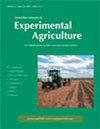Thermoregulation in ratites: a review
引用次数: 20
Abstract
Laboratory and free-ranging studies on the emu, ostrich and kiwi show ratites to be competent homeotherms. While body temperature and basal metabolic rate are lower in ratites than other birds, all of the thermoregulatory adaptations present in other birds are well established in ratites. The thermoneutral zone has been established for the emu and kiwi, and extends to 10°C. Below that zone, homeothermy is achieved via the efficient use of insulation and elevated metabolic heat production. In the heat, emus and ostriches increase respiratory evaporative water loss and use some cutaneous water loss. Respiratory alkalosis is avoided by reducing tidal volume. In severe heat, tidal volume increases, but the emu becomes hypoxic and hypocapnic, probably by altering blood flow to the parabronchi, resulting in ventilation/perfusion inhomogeneities. Ostriches are capable of uncoupling brain temperature from arterial blood temperature, a phenomenon termed selective brain cooling. This mechanism may modulate evaporative effector responses by manipulating hypothalamic temperature, as in mammals. The implications of thermal physiology for ratite production systems include elevated metabolic costs for homeothermy at low ambient temperature. However, the emu and ostrich are well adapted to high environmental temperatures.比率的体温调节:综述
对鸸鹋、鸵鸟和几维鸟的实验室和自由放养研究表明,它们是称职的恒温动物。虽然大鼠的体温和基础代谢率比其他鸟类低,但其他鸟类的所有体温调节适应都在大鼠中得到了很好的建立。已经为鸸鹋和猕猴桃建立了热中性区,并延伸到10°C。在该区域以下,恒温是通过有效利用隔热和提高代谢热产量来实现的。在高温下,鸸鹋和鸵鸟增加了呼吸蒸发水分的损失,并利用了一些皮肤水分的损失。通过减少潮气量可避免呼吸性碱中毒。在极端高温下,潮气量增加,但鸸鹋变得缺氧和低碳酸血症,可能是由于改变了流向副支气管的血流量,导致通气/灌注不均匀。鸵鸟能够将脑温度与动脉血温度分离开来,这种现象被称为选择性脑冷却。这种机制可能通过控制下丘脑温度来调节蒸发效应反应,就像在哺乳动物中一样。热生理学对速率生产系统的影响包括在低环境温度下恒温的代谢成本升高。然而,鸸鹋和鸵鸟很好地适应了高温环境。
本文章由计算机程序翻译,如有差异,请以英文原文为准。
求助全文
约1分钟内获得全文
求助全文

 求助内容:
求助内容: 应助结果提醒方式:
应助结果提醒方式:


